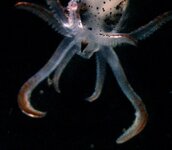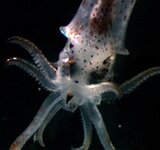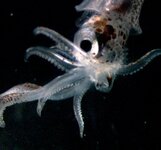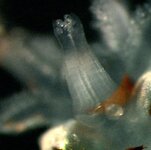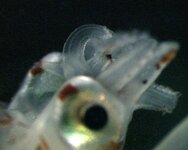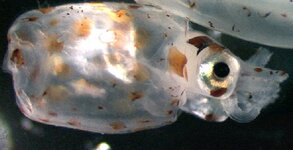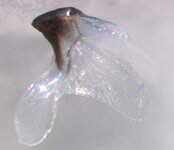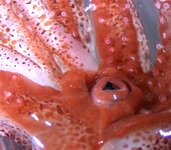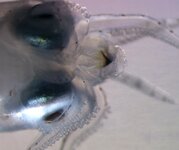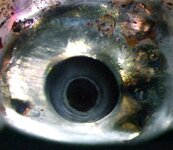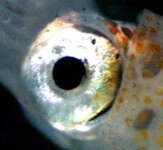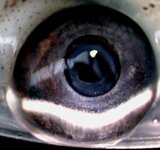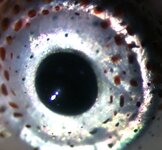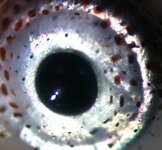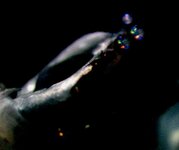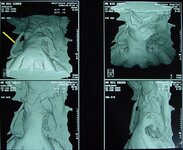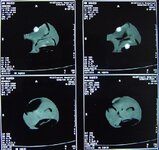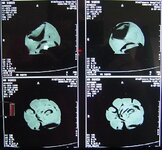- Joined
- Nov 19, 2002
- Messages
- 4,674
These are of juvenile Moroteuthis (ML ~ 15mm), taken beneath a microscope (very difficult to focus on a moving animal this small, beneath a scope).
It'll give you some indication what the buccal membrane/beaks are doing, and how far they protrude from the arms of the animal.
Moroteuthis and Architeuthis are VERY similar beasts (if you forget about the adult hooks on the tentacles, and warty skin of Moroteuthis).
It'll give you some indication what the buccal membrane/beaks are doing, and how far they protrude from the arms of the animal.
Moroteuthis and Architeuthis are VERY similar beasts (if you forget about the adult hooks on the tentacles, and warty skin of Moroteuthis).

